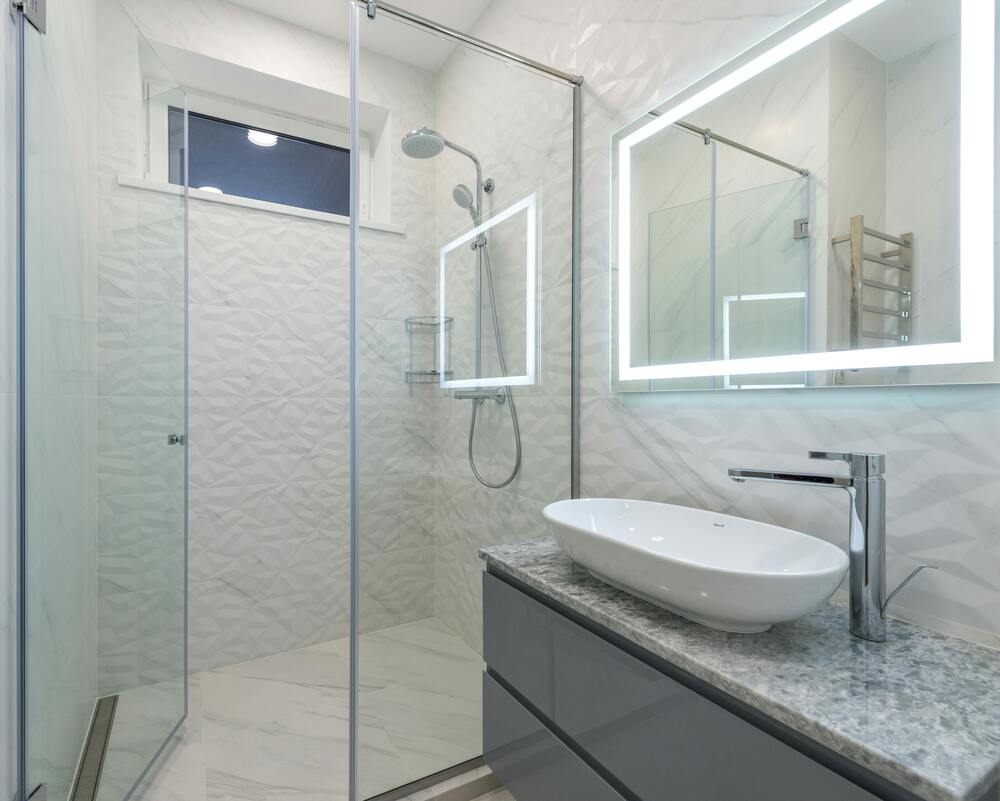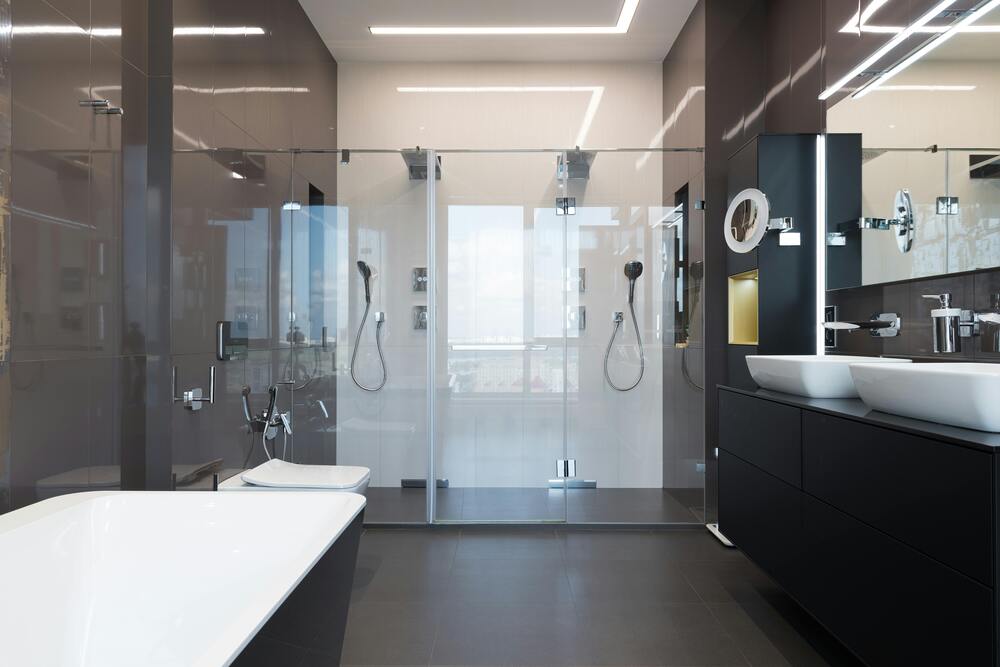Blog Overview
Smart layouts make even the smallest bathroom feel spacious and stylish—choose a design that fits your footprint, keep fixtures compact, and let clever planning take care of the rest.
Blog Discussion Points:
- Single‑wall (three‑in‑a‑row) layout for efficiency
- Corner or wet‑room style to open the floor plan
- Galley layout with fixtures on opposing walls
- Pocket doors and floating fixtures to reclaim space
- L‑shaped layouts for dividing and zoning within a small bath
When it comes to bathroom renovations in Australia, one of the most common challenges homeowners face is working with limited space. Whether you’re upgrading an ensuite, reworking a powder room, or renovating a compact main bathroom, smart layout design is crucial to maximise both functionality and style.
Thankfully, small bathrooms don’t mean you have to sacrifice comfort or luxury. In fact, with clever planning, even the tiniest bathrooms can feel spacious, efficient, and welcoming.
1. Three-in-a-Row Layout (Single Wall Layout)

The three-in-a-row or single-wall layout is perhaps the most space-efficient design. It places the toilet, vanity, and shower along one wall, often in that exact order.
Why It Works:
- It keeps plumbing confined to one wall, reducing renovation costs.
- Great for long and narrow bathrooms, such as those in apartments or granny flats.
- Keeps the bathroom visually clean and clutter-free.
Ideal For:
- Apartment renovations
- Narrow ensuite bathrooms
- Powder rooms
Design Tip: Use floating vanities or wall-mounted toilets to free up floor space and create a sense of openness.
2. Shower Over Bath Combo

If you love a relaxing soak but don’t have room for a separate shower and bath, this design offers the best of both worlds.
Why It Works:
- Combines two major fixtures in one footprint.
- Ideal for families with kids who need a tub but also want the convenience of a shower.
- Adds value for prospective buyers, especially in older Australian homes where baths are still prized.
Ideal For:
- Family homes
- Older homes with traditional layouts
- Budget-conscious renovators
Design Tip: Choose a frameless glass screen or curtain to keep things airy and prevent water from splashing into the rest of the space.
3. Corner Shower Layout

A corner shower can open up the floor plan dramatically, especially when paired with a curved or frameless glass enclosure.
Why It Works:
- Tucks into an unused corner, leaving more room for movement.
- Maximises floor space in square or tight bathrooms.
- Visually expands the room with less bulky partitions.
Ideal For:
- Ensuite bathrooms
- Square or boxy bathrooms
- Minimalist design lovers
Design Tip: Opt for large-format tiles and light colour palettes to make the space feel bigger.
4. Wet Room Design

Inspired by European and Japanese bathrooms, wet rooms are entirely waterproofed spaces where the shower is open or separated only by a glass screen, and the floor is one continuous surface.
Why It Works:
- Ideal for ultra-compact or awkwardly shaped spaces.
- Creates a seamless, modern aesthetic.
- Easier to clean and maintain, especially in high-use households.
Ideal For:
- Small urban homes or units
- Elderly or mobility-impaired residents (with proper planning)
- Modern minimalist renovations
Design Tip: Ensure proper drainage and waterproofing with a qualified tradesperson to prevent long-term issues.
5. Galley Bathroom Layout
The galley layout—where fixtures are positioned along two opposing walls—is perfect for long, narrow bathrooms. Think of it like a compact corridor with efficient use of both sides.
Why It Works:
- Offers more storage and counter space than a single-wall design.
- Encourages symmetry and balance.
- Allows separate zones for vanity, toilet, and shower.
Ideal For:
- Long and narrow bathrooms
- Shared or guest bathrooms
- Renovations in townhouses or duplexes
Design Tip: Position the vanity opposite the shower or bath to maintain a functional flow and avoid congestion.
6. Compact Ensuite with Pocket Door
In ultra-small ensuites—such as those adjoining master bedrooms or guest rooms—a layout that includes a pocket door can significantly improve usability. Pocket doors slide into the wall, freeing up critical swing space.
Why It Works:
- Saves floor area otherwise lost to a swinging door.
- Offers privacy without intruding into the bedroom or bathroom space.
- Makes tight floor plans feel more open and accessible.
Ideal For:
- Ensuite bathrooms in master or guest rooms
- Granny flat bathrooms
- Tiny homes or cabins
Design Tip: Use wall niches instead of bulky storage units to maintain a sleek look and feel.
7. L-Shaped Layout

This smart layout uses an L-shaped arrangement to tuck the shower or toilet behind a privacy wall or partition, creating zones within the space.
Why It Works:
- Provides visual privacy in shared or family bathrooms.
- Helps divide wet and dry areas naturally.
- Allows for creative tiling or design features on the partition wall.
Ideal For:
- Main bathrooms with multiple users
- Homes with kids or shared accommodations
- Anyone seeking a more “room-like” bathroom feel
Design Tip: Use decorative tiles or feature lighting on the partition wall for an added sense of luxury.
8. Floating Fixtures and Wall Storage
While not a layout per se, choosing floating vanities, toilets, and wall-mounted storage can dramatically affect how a small bathroom feels and functions.
Why It Works:
- Increases visible floor space, making the room feel larger.
- Easier to clean under fixtures.
- Adds a sleek, contemporary touch to the design.
Design Tip: Pair floating fixtures with under-cabinet lighting for a spa-like glow in the evenings.
Things to Consider When Planning a Small Bathroom Layout

While these layouts offer excellent foundations, your final design will depend on several key factors:
1. Plumbing
Rearranging plumbing can increase costs significantly. If budget is a concern, consider layouts that keep plumbing close to existing positions.
2. Natural Light
Bathrooms with windows feel larger. If your small space has a window, consider layouts that allow light to reach the whole room.
3. Ventilation
Poor ventilation can lead to mould and damage. Consider an exhaust fan and window placement early in your design process.
4. Storage Needs
Smart storage, like mirrored cabinets or recessed shelves, can prevent your small bathroom from feeling cluttered.
5. Australian Standards and Waterproofing
Always comply with Australian Standards (AS 3740) for waterproofing, drainage, and fixture spacing to ensure your bathroom is safe, functional, and insurable.
A Note on Renovations
If your current layout doesn’t make sense, or you’re dealing with poor drainage, lack of storage, or outdated fixtures, a renovation may be the best option. Renovating a bathroom—especially a small one—can drastically increase the value of your home and make your everyday routine more enjoyable.
Even better, renovations don’t have to mean a full gut job. Sometimes, a few strategic changes (like swapping in a corner shower or adding a pocket door) can make a massive difference.
If you’re considering an upgrade, it’s worth talking to professionals who specialise in bathroom renovations and understand how to work within limited footprints.
Frequently Asked Questions
What’s the simplest layout for a small bathroom?
A single‑wall layout places the toilet, vanity and shower along one wall, keeping plumbing consolidated and freeing up the rest of the room for movement and light.
How do corner or wet‑room designs help maximise space?
By tucking the shower into a corner or making the entire room a wet zone, you reduce partitions and wasted floor area, which instantly makes the room feel larger and less cluttered.
Why consider a galley layout in narrow bathrooms?
When a bathroom is long and narrow, placing fixtures on two facing walls creates balanced traffic flow and maximises usable wall space on each side.
What role do door design and floating fixtures play?
Using a pocket sliding door instead of a swing door saves clearance space, and wall‑mounted vanities or toilets reveal more floor, producing an airy, less crowded feel.
When should I explore more complex layouts like L‑shapes or mixed zones?
If multiple users need to share the space, or you want separate wet and dry zones (for example a shower behind a partition), an L‑shaped layout or partial zoning helps the bathroom function like a larger room while staying compact.
Final Thoughts
Designing a small bathroom is all about smart planning. With the right layout—whether it’s a corner shower, wet room, or single-wall setup—you can create a space that’s both stylish and practical.
If you’re thinking of upgrading, don’t go it alone. Jim’s Handyman offers reliable, expert help for everything from fixture installs to full bathroom makeovers.
👉 Ready to maximise your space? Call Jim’s Handyman and bring your small bathroom vision to life.
